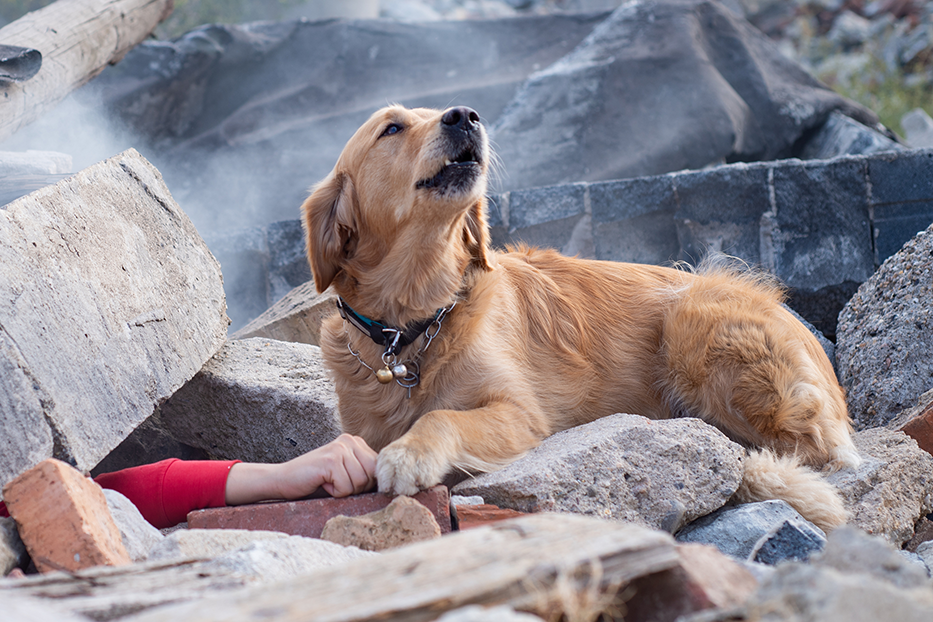Search and Rescue Teams
The use of search and rescue dogs (SAR) is a valuable component in wilderness tracking, natural disasters, mass casualty events, and in locating missing people. Dedicated handlers and well-trained dogs are required in order to be effective in search efforts. While some service dogs are trained for individual tracking Search and rescue dog teams are not service dogs and these teams have no public access rights. SAR dog teams typically work on foot.
Tracking and Trailing Teams
Search and rescue dogs are broadly classified as air-scenting dogs or trailing and tracking dogs. Other considerations for classification are whether the dogs are able to scent discriminate, and under what conditions they can work. Scent discriminating dogs have proven their ability to alert only on the scent of an individual person.
As a side note, the nonprofit 4 Paws for Ability trains their tracking dogs this way. A number of children with Autism tend to elope. 4 Paws was the first organization to train their service dogs for children with Autism. Because many of these children elope, 4 Paws trained their dogs to assist by tracking the child specific to that child’s scent.
Non-scent discriminating Dog Teams
Non-scent discriminating dogs used for tracking are trained to follow a scent of a specific type, such as any human scent or any cadaver scent. Search and rescue dogs can be trained specifically for rubble searches, for water searches, and for avalanche searches.
Air-Scenting Teams
Air-scenting dogs use general human scents to zero in on subjects, whereas tracking dogs rely on the scent of the specific subject. Air-scenting dogs typically work off-lead or on a long line, are usually, though not always, non-scent-discriminating (e.g., locate scent from any human as opposed to a specific person).
Search and Rescue Text Transcript
Search and Rescue Audio File
Search and rescue teams cover large areas of ground and different types of terrain. The dogs are trained to follow diffused and dispersed airborne scents. When they find their target or lost party, the dog may sit and alert by continual barking until their handler arrives. The alert indicates to their handler that the dog found the subject their find or the dog may double back to the handler and lead her back to the subject.
Search and Rescue Handler Techniques
Teams must consider every part of the environment, the terrain, and weather conditions. Handlers need analyze and consider wind speed, and direction, temperature, humidity, and sky conditions. All these elements help the handler determine best approach to the ground they need to cover.
Typically breeds good for air-scenting training usually include herding breeds, German or Belgian Shepherds and sporting breeds like Goldens, or Labs. These breeds have a reputation for their attachment to their human counterparts. Whatever the job for any working dog, the key is the dog’s desire to do the job. For search and rescue dogs, the reward is in the success of the mission.
Please contact mecontact me if you have questions or comments
